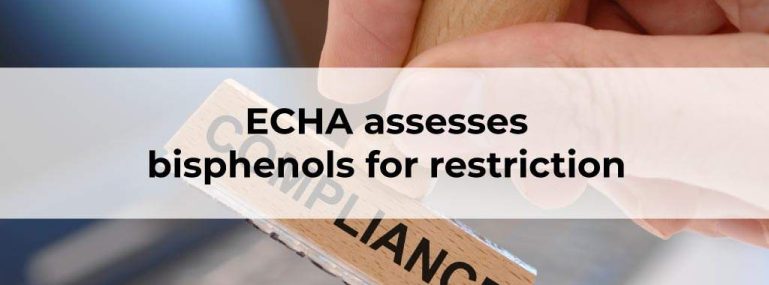A total of 148 bisphenols were assessed by ECHA and member states on 6th April 2022, and more than 30 of them were recommended for restriction. Because of their potential hormonal or reprotoxic effects.
Bisphenols are known endocrine disruptors, both for human health and the environment. They are also known for their reprotoxic properties. Since these are widely used, 34 bisphenols have been placed under a group restriction to manage risks. This number may vary as more information is generated for these and other bisphenols lacking information.
Bisphenols (bisphenol A, bisphenol B, 2,2-bis(4′-hydroxyphenyl)-4-methylpentane) have already been identified by EU REACH as substances of very high concern (SVHCs). A harmonized classification and labeling scheme is proposed for other bisphenols that have sufficient information on their potential hazards. Many group members need more information to confirm any potential endocrine-disrupting or reprotoxic properties.
Group assessment of chemicals has been a successful approach. The advantage is that it can quickly identify which chemicals require regulatory action or additional data, or those that do not require further action at this time. ECHA’s director for prioritization and integration, says that by assessing bisphenols with similar uses and functions as a group, companies can avoid replacing one bisphenol with one that is just as harmful – so-called regrettable substitution.
Authorities in Germany are preparing a proposal to restrict the use of bisphenol A and other bisphenols with endocrine-disrupting properties for the environment. The European Commission and ECHA will determine if any further regulatory action is needed once it is clear which bisphenols are covered by the German proposal.
Additionally, since bisphenol AF and its eight salts are also PFAS, the planned restriction of per- and polyfluoroalkyl substances (PFASs) must also be taken into consideration as part of any additional measures.
People and the environment are exposed to the harmful effects of bisphenols by these products. Polycarbonate plastics and epoxy resins and hardeners are two examples of polymers made with bisphenols as intermediates. Also, they can be found in thermal paper, inks and coatings, adhesives, textiles, papers, and boards. There is a possibility that industrial and consumer use may result in relatively low exposures, as well as professional and industrial uses.





